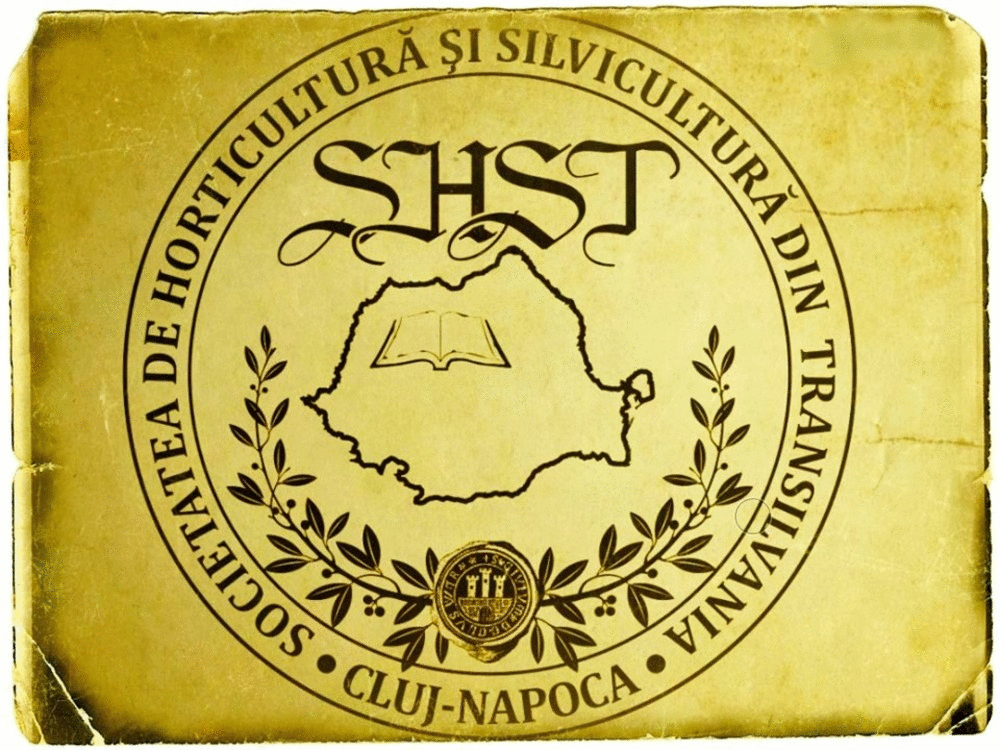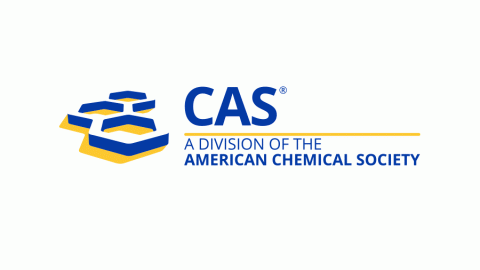Extraction of nutrients from Rumex vesicarius, a wild indigenous edible plant from United Arab Emirates
DOI:
https://doi.org/10.55779/nsb15311658Keywords:
antioxidants, edible wild plant, phytochemical analysis, proximate compositionAbstract
In the present study, an attempt has been done to explore the phytochemicals and proximate compositions from an edible plant Rumex vesicarius, which is found in the wild habitats in United Arab Emirates. Extracts were prepared from the dried powder of the areal parts of the plant using methanol as solvent in Soxhlet. The extract was tested for phytochemicals and also studied for the proximate composition. The antioxidant power of the extract was determined by using four different assays (ABTS, DPPH, superoxide anion and hydroxyl radical scavenging activity). The results revealed that the extracts contain phytochemicals, which can be used as effective radical scavengers. The antioxidant activities were highly significant in the extract, which shows that this plant has high potential to be used in traditional and alternative medical systems. The present information would be of helpful for the future isolation and pharmacologically active compound identification from this plant.
Metrics
References
Alfawaz MA (2006). Chemical composition of hummayd (Rumex vesicarius) grown in Saudi Arabia. Journal of Food Composition and Analysis 19(6-7):552-555. http://dx.doi.org/10.1016/j.jfca.2004.09.004
Alfawaz, M. A. (2006). Chemical composition of hummayd (Rumex vesicarius) grown in Saudi Arabia. Journal of Food Composition and Analysis, 19(6-7), 552-555.
Alhimaidi AR, Ammari AA, Okla MK, Algadi MQ, Amran RA, Alhusayni HI, Alhimaidi MA (2021). The impact of Rumex vesicarius seed water extracts on mice fertility. Environmental Science and Pollution Research 29(8):11524-11533. https://doi.org/10.1007/s11356-021-16335-7
Alsamri H, Athamneh K, Pintus G, Eid AH, Iratni R (2021). Pharmacological and antioxidant activities of Rhus coriaria L. (Sumac). Antioxidants 10:73. https://doi.org/10.3390/antiox10010073
Ammar N, Ayoub N, El-Ahmady S, El-Kassem L, Zeid E (2015). Phytochemical and cytotoxic studies of Rumex pictus forssk. and Rumex vesicarius L. (family Polygonaceae), growing in Egypt. European Journal of Medicinal Plants 10(3):1-13. https://doi.org/10.9734/EJMP/2015/19830
AOAC (1990). Official Methods of Analysis, Association of Analytical Chemists. 15th ed., Washington D. C. USA. 1121-1180.
AOAC (1995). Official Methods of Analysis. Association of Official Analytical Chemists. In: Horwitz W (Ed). Washington, DC, USA.
Beddou F, Bekhechi C, Ksouri R, Chabane Sari D, Atik Bekkara F (2015). Potential assessment of Rumex vesicarius L. as a source of natural antioxidants and bioactive compounds. Journal of Food Science and Technology 52(6):3549-3560. https://doi.org/10.1007%2Fs13197-014-1420-9
Bhatt SK, Nanjarajurs SM, Eligar SM (2022). In vitro lipoxygenase and hemolysis inhibition by polyphenolic antioxidants from tropical green leafy vegetables. Emirates Journal of Food and Agriculture 34(7). https://doi.org/10.9755/ejfa.2022.v34.i7.2897
Brand-Williams W, Cuvelier ME, Berset CLWT (1995). Use of a free radical method to evaluate antioxidant activity. LWT-Food Science and Technology 28(1):25-30. https://doi.org/10.1016/S0023-6438(95)80008-5
Chang SK, Alasalvar C, Shahidi F (2019). Superfruits: Phytochemicals, antioxidant efficacies, and health effects–A comprehensive review. Critical Reviews in Food Science and Nutrition 59(10):1580-1604. https://doi.org/10.1080/10408398.2017.1422111
Cosme P, Rodríguez AB, Espino J, Garrido M (2020). Plant phenolics: Bioavailability as a key determinant of their potential health-promoting applications. Antioxidants 9(12):1263. https://doi.org/10.3390/antiox9121263
Edeoga HO, Okwu DE, Mbaebie BO (2005). Phytochemical constituents of some Nigerian medicinal plants. African Journal of Biotechnology 4(7):685-688. https://doi.org/10.5897/AJB2005.000-3127
El‐Hawary SA, Sokkar NM, Ali ZY, Yehia MM (2011). A profile of bioactive compounds of Rumex vesicarius L. Journal of Food Science 76(8):C1195-C1202. https://doi.org/10.1111/j.1750-3841.2011.02370.x
Favela‐González KM, Hernández‐Almanza AY, De la Fuente‐Salcido NM (2020). The value of bioactive compounds of cruciferous vegetables (Brassica) as antimicrobials and antioxidants: A review. Journal of Food Biochemistry 44(10):e13414. https://doi.org/10.1111/jfbc.13414
Ghasemzadeh A, Jaafar HZ, Bukhori MFM, Rahmat MH, Rahmat A (2018). Assessment and comparison of phytochemical constituents and biological activities of bitter bean (Parkia speciosa Hassk.) collected from different locations in Malaysia. Chemistry Central Journal 12(1):1-9. https://doi.org/10.1186/s13065-018-0377-6
Hameed I, Dastagir G (2009). Nutritional analyses of Rumex hastatus D. Don, Rumex dentatus Linn and Rumex nepalensis Spreng. African Journal of Biotechnology 8(17):4131-4133.
Harborne AJ (1998). Phytochemical methods a guide to modern techniques of plant analysis. Springer Science & Business Media.
Harborne JB, Baxter E, Harborne JB, Baxter H (1999). The handbook of natural flavonoids, vol. 2 Wiley. New York.
Hasan M, El-Shehawi AM, Elseehy MM, Reza M, Haque A (2021). R. vesicarius L. exerts nephroprotective effect against cisplatin-induced oxidative stress. BMC Complementary Medicine and Therapies 21(1):1-12. https://doi.org/10.1186/s12906-021-03398-9
Idris OA, Wintola OA, Afolayan AJ (2019). Comparison of the proximate composition, vitamins (ascorbic acid, α-tocopherol and retinol), anti-nutrients (phytate and oxalate) and the GC-MS analysis of the essential oil of the root and leaf of Rumex crispus L. Plants 8:51. https://doi.org/10.3390/plants8030051
Khan IA, Hussain M, Hussain N, Alqahtani AM, Alqahtani T (2022) Cardioprotective effect of Rumex vesicarius Linn. leaf extract against catecholamine-induced cardiotoxicity. Molecules 27:3383. https://doi.org/10.3390/molecules27113383
Krishnaiah D, Sarbatly R, Nithyanandam R (2011). A review of the antioxidant potential of medicinal plant species. Food and Bioproducts Processing 89(3):217-233. https://doi.org/10.1016/j.fbp.2010.04.008
Lee SE, Hwang HJ, Ha JS, Jeong HS, Kim JH (2003). Screening of medicinal plant extracts for antioxidant activity. Life Sciences 73(2):167-179. https://doi.org/10.1016/s0024-3205(03)00259-5
Lourenço SC, Moldão-Martins M, Alves VD (2019). Antioxidants of natural plant origins: from sources to food industry applications. Molecules 24:4132. https://doi.org/10.3390/molecules24224132
Maheshwari S, Kumar V, Bhadauria G, Mishra A (2022). Immunomodulatory potential of phytochemicals and other bioactive compounds of fruits: A review. Food Frontiers 3(2):221-238. https://doi.org/10.1002/fft2.129
Mostafa HAM, Elbakry AA, Eman AA (2011). Evaluation of antibacterial and antioxidant activities of different plant parts of Rumex vesicarius L. (Polygonaceae). International Journal of Pharmacy and Pharmaceutical Sciences 3(2):109-118.
Nishimiki M, Rao NA, Yagi K (1972) The occurrence of superoxide anion in the reaction of reduced phenazine methosulphate and molecular oxygen. Biochemical and Biophysical Research Communications 46:849-853. https://doi.org/10.1016/S0006-291X(72)80218-3
Prasad PSH, Ramakrishnan N (2011). Evaluation of nitric oxide scavenging activity of Rumex vesicarius L. Asian Journal of Research in Chemistry 4(9):1482-1484. https://doi.org/10.1248/bpb.27.170
Sakkir S, Kabshawi M, Mehairbi M (2012). Medicinal plants diversity and their conservation status in the United Arab Emirates (UAE). Journal of Medicinal Plants Research 6(7):1304-1322.
Salama SA, Al-Faifi ZE, Masood MF, El-Amier YA (2022). Investigation and biological assessment of Rumex vesicarius L. extract: characterization of the chemical components and antioxidant, antimicrobial, cytotoxic, and anti-dengue vector activity. Molecules 27(10):3177. https://doi.org/10.3390/molecules27103177
Singleton VL, Rossi JA (1965). Colorimetry of total phenolics with phosphomolybdic-phosphotungstic acid reagents. American Journal of Enology and Viticulture 16(3):144-158. https://doi.org/10.5344/ajev.1965.16.3.144
Tabaasum S, Sarawar S, Mahadi SFA, Islam SN (2021). Anti-inflammatory activity of ethnic vegetables osonshak (Spilanthes calva) and chikipung (Rumex vesicarius) in animal model. Pharmacology & Pharmacy 12(4):85-90. https://doi.org/10.4236/pp.2021.124008
Tajdar HK, Majid AG, Nasir AS, Aftab A, Mohd Nazam A (2014). Antioxidant potential of Rumex vesicarius L.: in vitro approach. Asian Pacific Journal of Tropical Biomedicine 4(7):538-544. https://doi.org/10.12980%2FAPJTB.4.2014C1168
USEPA United States Environmental Protection Agency (1994). Method 200.8, Revision 5.4 Determination of Trace Elements in Waters and Wastes by Inductively Coupled Plasma–Mass Spectrometry.
Van Wyk AS, Prinsloo G (2018). Medicinal plant harvesting, sustainability and cultivation in South Africa. Biological Conservation 227:335-342. https://doi.org/10.1016/j.biocon.2018.09.018
Vasas A, Orbán-Gyapai O, Hohmann J (2015). The genus Rumex: Review of traditional uses, phytochemistry and pharmacology. Journal of Ethnopharmacology 175:198-228. https://doi.org/10.1016/j.jep.2015.09.001
Wolfenden BS, Willson RL (1982). Radical-cations as reference chromogens in kinetic studies of ono-electron transfer reactions: pulse radiolysis studies of 2, 2′-azinobis-(3-ethylbenzthiazoline-6-sulphonate). Journal of the Chemical Society, Perkin Transactions 2(7):805-812. https://doi.org/10.1039/P29820000805
Xiu-Qin L, Chao J, Yan-Yan S, Min-Li Y, Xiao-Gang C (2009) Analysis of synthetic antioxidants and preservatives in edible vegetable oil by HPLC/TOF-MS. Food Chemistry 113:692-700. https://doi.org/10.1016/j.foodchem.2008.07.072
Younes KM, Romeilah RM, El-Beltagi HS, Hani EL, Rajendrasozhan S, El-Shemy HA, Shalaby EA (2021). In-vitro evaluation of antioxidant and antiradical potential of successive extracts, semi-purified fractions and biosynthesized silver nanoparticles of Rumex vesicarius. Notulae Botanicae Horti Agrobotanici Cluj-Napoca 49(1):12293-12293. https://doi.org/10.15835/nbha49112293
Zhishen J, Mengcheng T, Jianming W (1999). The determination of flavonoid contents in mulberry and their scavenging effects on superoxide radicals. Food Chemistry 64(4):555-559. https://doi.org/10.1016/S0308-8146(98)00102-2
Downloads
Published
How to Cite
Issue
Section
License
Copyright (c) 2023 Reem A.S. ALKAABI, Hasan H. BANI MATAR, Kandhan KARTHISHWARAN, Zienab F.R. AHMED, Shyam KURUP, Mohammed SALEM ALYAFEI, Abdul JALEEL

This work is licensed under a Creative Commons Attribution 4.0 International License.
Papers published in Notulae Scientia Biologicae are Open-Access, distributed under the terms and conditions of the Creative Commons Attribution License.
© Articles by the authors; licensee SMTCT, Cluj-Napoca, Romania. The journal allows the author(s) to hold the copyright/to retain publishing rights without restriction.
License:
Open Access Journal - the journal offers free, immediate, and unrestricted access to peer-reviewed research and scholarly work, due SMTCT supports to increase the visibility, accessibility and reputation of the researchers, regardless of geography and their budgets. Users are allowed to read, download, copy, distribute, print, search, or link to the full texts of the articles, or use them for any other lawful purpose, without asking prior permission from the publisher or the author.













.png)















